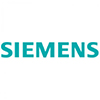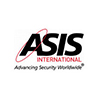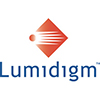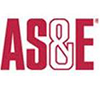
Network helps developers become "first mover" NFC providers.

According to Mark Bower, even in a highly-controlled organization the size of the US Army, there are going to be operations where staff, for various reasons, ignore their corporate security mandates.

Attend a break-out session, talk with SMEs, check out the Security Operations Center demo, and attend a customer appreciation reception.

Law enforcement and military professionals, you are invited!

New VP of Marketing and Sales brings decades of experience with industry-leading companies.

To select this year's Laureates, Computerworld relied on a panel of 22 distinguished judges -- many of them Computerworld Premier 100 IT Leader Honorees from diverse industries -- to evaluate the humanitarian benefits and measurable results of applying technology to meet a specific social or business need.

No software needed, simply plug in, present and populate information. On Display at ISC West, Booth 20029.

In charge of creating new business, strategic relationships and partnerships with organizations seeking global authentication solutions.

Visitor manager, access manager and identity manager solutions gain benefits of truly-integrated, open architecture smart card and NFC-enabled platforms.

IP-driven, customer-focused Pelco by Schneider Electric’s Sarix Value Range IP cameras are compact, affordable, easy-to-use solutions for small- to medium-sized businesses.

As an AMAG Certified Partner, Open Road’s Video Image Control and Display System (VICADS) 4.1 integrates with AMAG’s Symmetry v7.0.1 Security Management System that combines the latest video surveillance management with feature-rich access control.

Jennifer Vogel was a key contributor to Continental Airlines’ success, helping the company significantly expand internationally, address regulatory issues, and restructure and rebuild after September 11, 2001.

Armed with pen in hand, Gov. Dannal P. Malloy makes a strong statement about gun control by signing strong and harsh Connecticut legislation.
- By Ginger Hill
- Apr 04, 2013

With over 500,000 apps in the Apple App Store, what security professional has time to wade through that list? I have compiled a list of the top 10 security-related, must-have apps.
- By Ginger Hill
- Apr 04, 2013

Check out Sentry360's ISC West 2013 show preview and see what company Sentry360 has partnered with.

IQeye megapixel cameras keep track of staff and guests with ease, deepening relaxation.

New VIAAS iOS app allows users to easily view current surveillance activity and simplifies investigation of historic surveillance videos and images - anytime, anywhere.

Security surveillance manufacturer to give live demos of new devices at ISC West 2013 in Las Vegas.